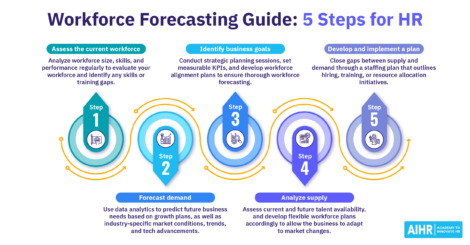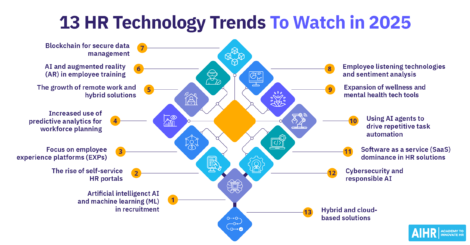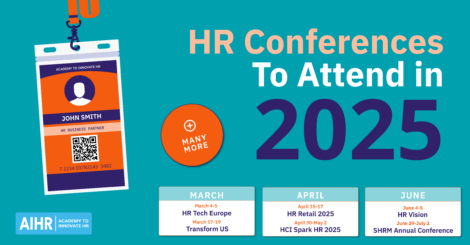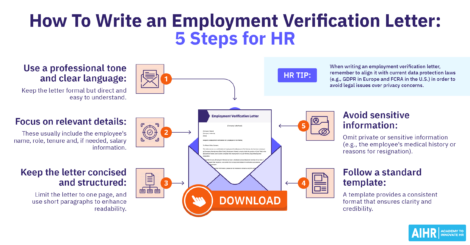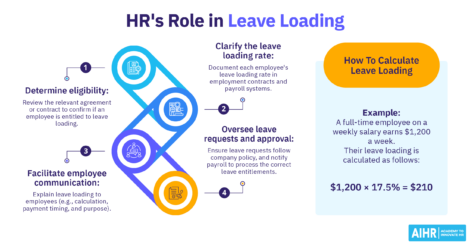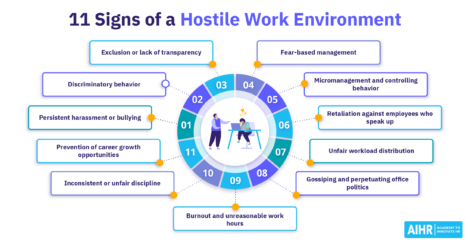People Operations: 9 Key Responsibilities
People Operations, HR, People and Culture… How many different terms can one use to describe the same thing? Or is there a difference between all of these? The one thing they have in common is focusing on a company’s most valuable asset: its people.

People Operations is a relatively new way of managing your workforce that emphasizes putting people first. It’s an approach with many benefits for both employees and the organization they work for.
But what exactly is People Operations, and how does it differ from a more traditional HR department? What does a People Ops team do, and what roles are typically a part of it? Let’s find out!
Contents
What is People Operations?
People Operations vs HR
What does People Operations do?
People Operations department and roles
Best practices for People Operations management
FAQ
What is People Operations?
People Operations, also referred to as People Ops or POPs, is a holistic, employee-centric approach to supporting and managing your workforce. The term was coined by Laszlo Bock—former HR Director at Google—who explored this in more depth in his book, Work Rules!
People Operations teams aim to create the best employee experience possible by developing and implementing strategies to promote employee development, engagement, satisfaction, and wellbeing. An important part of this is aligning people’s individual development and goals with the organization’s overall mission and objectives.
A successful People Operations department helps improve company culture and increases employee dedication and retention. This, in turn, will lead to a healthier, happier workforce that is more productive and fuels business growth.
People Operations vs HR
Although People Operations may sound the same as Human Resources, there are some key differences, especially compared to the more traditional HR departments.
The table below provides a (non-exhaustive) overview of how People Ops differs from HR.
Focused on maximizing the value of employees while also ensuring compliance.
Focused on enforcing compliance and reducing liability.
Consulted on strategic decisions and part of the conversation.
Informed about decisions and told to execute.
Takes a more expansive, holistic view of the business and uses people strategies to achieve goals.
Operates within established HR frameworks, focusing on standard practices and defined processes.
Proactively creates new systems and programs to improve ways of working.
Responds to issues as and when they arise.
Creates goal-based reward systems that encourage employee initiative and dedication.
Updates and maintains the employee database and enters pay changes per manager request.
Support the current workforce so that there is less turnover.
Hire a replacement when a position is vacant.
People Operations connects all departments.
HR departments tend to operate separately from other departments.
While there can certainly be differences between People Operations and traditional HR, things are often not as black and white as this table suggests.
Many modern HR departments have already embraced (parts of) the People Operations approach and are very proactive and employee-centric in their function. However, they are still called ‘HR’ for different reasons. Additionally, some organizations are adopting the term People and Culture to emphasize a focus on employee experience, engagement, and organizational values, further blurring the lines between these roles.
What does People Operations do?
While the exact tasks and responsibilities of a People Operations team will depend on its size, maturity, and the size of the organization it is in, there are some typical People Ops priorities and responsibilities, including:
1. Connecting individual employee performance with company goals
People Operations is responsible for helping employees understand their primary role in the wider organization. They also continuously reiterate how people are contributing to the company’s goals. Part of the People Ops job is to design work that encourages engagement and motivates employees to continue improving their skills, knowledge, and expertise.
People Ops should also be involved in determining the organization’s primary goals, discuss how achievable they are, and flag any immediate concerns.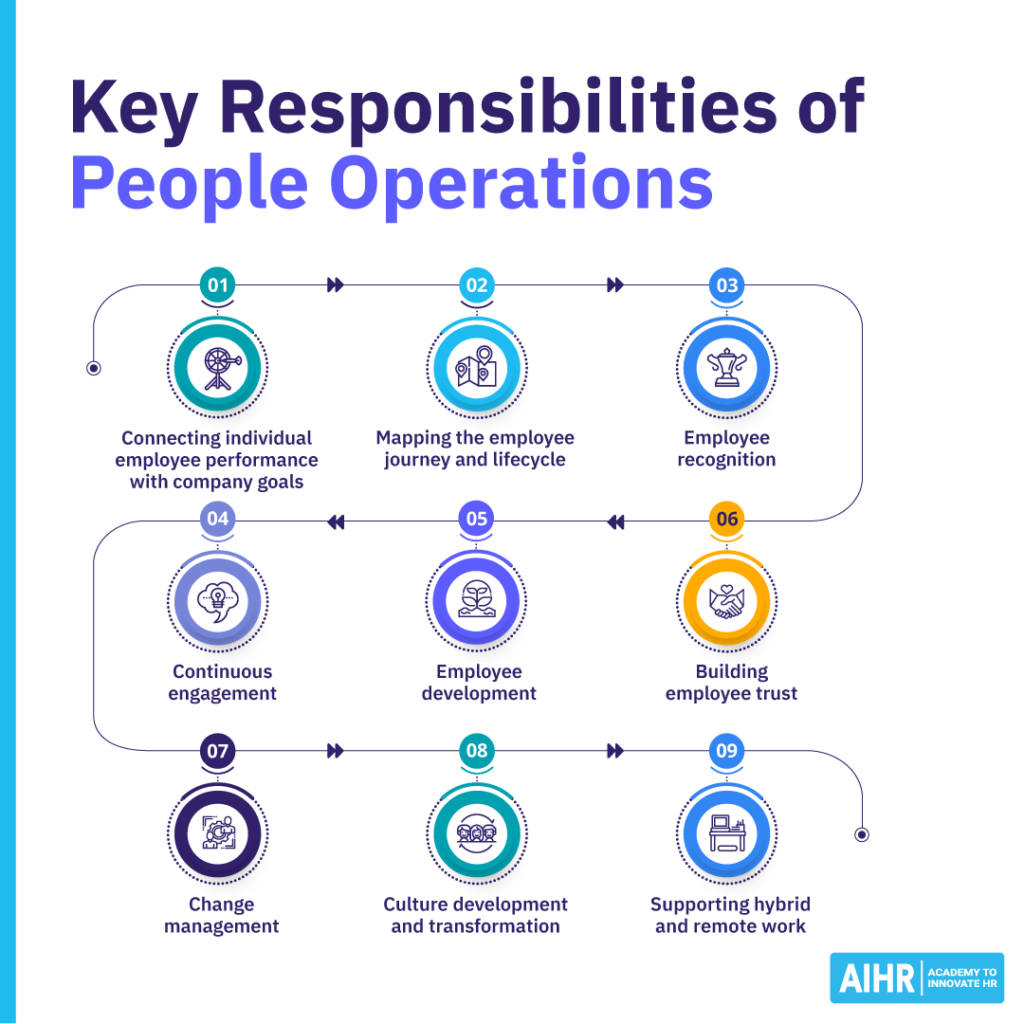
2. Mapping the employee journey and life cycle
Employee journey mapping is about identifying the “moments that matter” in the employee journey at your organization. This includes moments such as:
- Interviewing
- People’s first day at work and job orientation
- Other onboarding activities
- Performance reviews
- Training and development
- Team events
- Company restructurings
- Exit interviews
- Etc.
The People Ops team is responsible for mapping and continually improving these key moments – supported by employee feedback. Together, these moments make up a significant part of the overall employee experience.
Regularly communicating with employees throughout their journey also helps to promote an inclusive, supportive work culture and ensures everyone is heard. But to build trust, there must be consistency across the entire employee life cycle, which is what People Operations strives to do.
3. Employee recognition
Research by Gallup shows that when larger companies double their employee recognition efforts, they experience a 22% decrease in absenteeism and a 9% increase in productivity. Other benefits include increased engagement, lower turnover, and a better bottom line.
These are just some of the reasons why employee recognition matters and why People Operations should focus on it. A recognition program can come in different forms, including:
- Manager-to-employee recognition
- Peer-to-peer recognition
- Team recognition
- Company-wide recognition
- Or a combination of these.
Regardless of the system or method(s) you choose, the priority should be creating a culture of recognition and ensuring that employees feel appreciated for their work.
Equip your HR team to drive business impact
From change maangement to employee engagement and development, People Operations is at the heart of modern HR. Keep up with the evolving field of HR by building the skills you need to create impact.
With AIHR Full Academy Access, you can continuously upskill with unlimited access to world-class HR training. Expand your expertise, boost your career, and add value to your organization.
4. Continuous engagement
High employee turnover and burnout rates can severely impact your bottom line, and this is just one reason why keeping your staff happy and healthy at all times should be a key priority for POPs.
There are many employee engagement strategies you can use for this, fostering employee recognition (as mentioned above) being one of them.
However, to effectively engage employees, it is important to understand the core drivers of engagement – cultural, physical, and digital. As such, the People Ops team knows and addresses your employees’ pain points and regularly speaks to them to understand what they need and want in the workplace.
5. Employee development
People Operations is responsible for spearheading employee learning and development (unless the organization has its own L&D department). This includes:
- Skills training (upskilling and reskilling)
- Career pathing
- Management and leadership development and;
- Supporting where needed in goal setting for individual roles through KPIs.
Focusing on continuous learning helps build a cohesive and collaborative culture where all employees feel competent and valued. Skilled employees also tend to be more motivated, productive, and consistent in their work performance, hence helping the organization succeed.
For a development plan to be effective, it is crucial to have the support and active involvement of the employees it’s for. This includes diving into what skills they need to do their job, what would help them perform better at work, what professional goals they have within the company, and what support they need to help them develop.
6. Building employee trust
There are multiple ways a People Ops team can go about building trust between the employees and the organization, starting with:
- Being transparent with employees: For example, in today’s world, information on company culture, salaries, and benefits is readily available through social media or places like Glassdoor. This means People Operations needs to ensure transparency, particularly during the early stages of the employee life cycle. Distrust often arises due to a lack of communication. In other words, it’s up to the People Ops team to build this trust from the start by communicating regularly and effectively.
- Collecting – and acting on – employee feedback: This is another excellent way to build employee trust. Check in with employees (through surveys, in-person discussions, etc.) to gauge how they are feeling and how they feel about the company. Once you gather and assess this feedback, it is important to pitch suggested changes and improvements to employees and once again obtain their input. This contributes to an inclusive culture where employees feel heard and involved in the entire process.
7. Change management
People Operations teams are also (partially) responsible for managing changes across the business. This can include system updates, a move from manual to digital ways of working, employees switching teams, management shifts in business objectives, changes based on internal findings, and more.
Overseeing and managing these types of organizational transformation can ensure that the adoption goes smoothly. It helps everyone in the company adjust quickly and ensures no (or minimal) impact on output and the broader business goals.
8. Culture development and transformation
Another key priority of People Ops is championing the company culture and its values. POPs is well positioned to build a more ethical and diverse organizational culture and (co)manage cultural transformation if the current culture isn’t aligned with the company’s vision and objectives.
9. Supporting hybrid and remote work
Despite the seemingly ongoing push from many (large) organizations for their people to return to the office, many employees still work (partially) remotely.
According to the recent Gallup’s Indicators report, in the U.S. alone, 55% of those in remote-capable jobs are expected to work in a hybrid way, and 26% are expected to work exclusively remotely. While the advantages of hybrid work are significant for employees (think of a better work-life balance, less burnout or fatigue at work, and better use of their time), there are also some challenges that come with this setup.
According to the same Gallup indicator, remote and hybrid employees mentioned:
- Feeling less connected to the company’s culture
- Less cross-functional collaboration and communication
- Reduced collaboration and weaker relationships with their team members
- Less access to work resources and equipment
- More difficulty coordinating tasks, timelines, and schedules with their team members.
These are just a few examples of things that People Ops should be aware of and address if necessary to ensure that all employees feel supported and benefit from a great employee experience.
People Operations department and roles
As mentioned earlier, every People Operations team will look different depending on the size of the company, the budget available to hire people, and the organization’s POPs maturity.
Here’s a brief look at some typical roles you can come across in People Operations and their primary responsibilities:
People Operations Manager
A People Operations Manager manages the team’s overall work, similar to a Project Manager. It’s their job to oversee the team and ensure they work efficiently together within and across departments in a streamlined way.
People Operations Coordinator
People Operations Coordinators usually perform administrative and organizational duties and assist in project management. They ensure that the company’s day-to-day operations run smoothly.
Director of People Operations
A Director of People Operations leads, coaches, and oversees the entire People Operations team. Together with business leaders, they develop and drive forward a people strategy across the company. They also ensure that all policies and processes focus on supporting and improving the employee experience throughout the life cycle.
People Operations Specialist
A People Ops Specialist is responsible for running data checks, ensuring all HR records are accurate and up to date, and all queries are answered promptly. They provide onboarding support for new hires and often work alongside other teams, including recruitment. Excellent communication and customer service skills are essential for this role.
People Operations Analyst
A People Operations Analyst is typically in charge of researching, identifying flaws in processes and operations, and proposing improvements and changes. Analysts are (co) responsible for ensuring that the company is always compliant and follows regulations, thereby reducing liability risk.
Best practices for People Operations management
Since People Operations is still a relatively new concept for many, it can be hard to figure out how to get started and how to proceed.
Here are some best practices to consider for managing People Ops:
- Structure your People Operations team with intent: Clearly define the various roles and subsequent responsibilities within people operations. This creates clarity and manages expectations both inside and outside the People Ops team. Remember that you don’t necessarily have to hire a full People Ops team immediately, either. You can slowly transition by identifying and aligning with one or two business priorities first and looking into training options for your current staff to help them better understand the new approach, for example.
- Standardize processes but stay flexible: Develop and document SOPs (Standard Operating Procedures) for different parts of the employee life cycle, such as hiring, onboarding, performance reviews, and offboarding. Have clear policies and checklists, but be willing to adjust as the company and its employees’ needs evolve.
- Maintain a strong HR tech stack: A well-built HR tech stack considerably improves the (digital) employee experience. Two elements to consider in particular in that regard are:
- Integrations: A set of tools that can’t communicate with each other is counterproductive. Ask potential vendors if integrations exist for the tools you already use or if they can build custom integrations.
- Ease of use: Both People Operations and an HR tech stack aim to improve efficiency and create an excellent user experience. Therefore, your tech stack must be easy to navigate and run smoothly.
- Balance employee experience with compliance: People Operations management is also about constantly trying to strike a balance between creating a holistic, employee-centric approach to supporting your workforce and HR compliance. This means making sure that both the organization and its people follow the applicable policies, processes, and procedures to minimize legal and regulatory risks.
- Strengthen cross-departmental collaboration: People Operations management isn’t just about simply managing the workforce—it’s about working closely with other departments to align people strategies with business objectives. Focus on fostering strong relationships with leadership, finance, operations, and other teams to ensure that workforce planning, talent development, and company culture support overall organizational goals. Effective collaboration helps create a more cohesive, agile, and strategically aligned workplace.
- Ask for employee input: Naturally, an employee-centric approach requires (a lot of) employee input. Ask your employees for feedback about the company as a whole and your people operations efforts in particular. You can do this via employee pulse surveys, stay interviews, manager one-on-ones, and employee focus groups.
- Make data-driven decisions: To optimize your People Operations efforts, you want to track your activities to make decisions based on data and evidence. Calculating your employee turnover rate or measuring employee productivity and (new hire) satisfaction levels, for instance, is an excellent start. Monitoring this data on an HR dashboard allows you to easily see what is working and where there is room for improvement.
A final note
No matter how you look at it, when your employees are engaged, feel appreciated, and taken care of, you will likely create an exceptional organizational culture and a fantastic reputation as an employer.
A People Ops approach can help you achieve all of this and more, but whether you decide to build a separate People Ops team or have your current HR team move toward this method one step at a time doesn’t matter all that much, as long as you move in the right, people-first direction.
FAQ
People Operations, or People Ops, refers to a way of workforce management that focuses on people over processes. It emphasizes the importance of a great employee experience and the alignment of individual employee goals with those of the company.
A People Operations Manager focuses on aligning people strategies with business goals by improving employee experience, optimizing HR processes, and fostering a strong company culture. They go beyond traditional HR functions by driving engagement, workforce development, and cross-department collaboration to create a more efficient and people-centric organization.
Generally speaking, a traditional Human Resources department focuses more on processes and tends to be more reactive, while a People Operations team takes an employee-centric approach and tries to act proactively as much as possible.
Learn more
Related articles
Are you ready for the future of HR?
Learn modern and relevant HR skills, online








